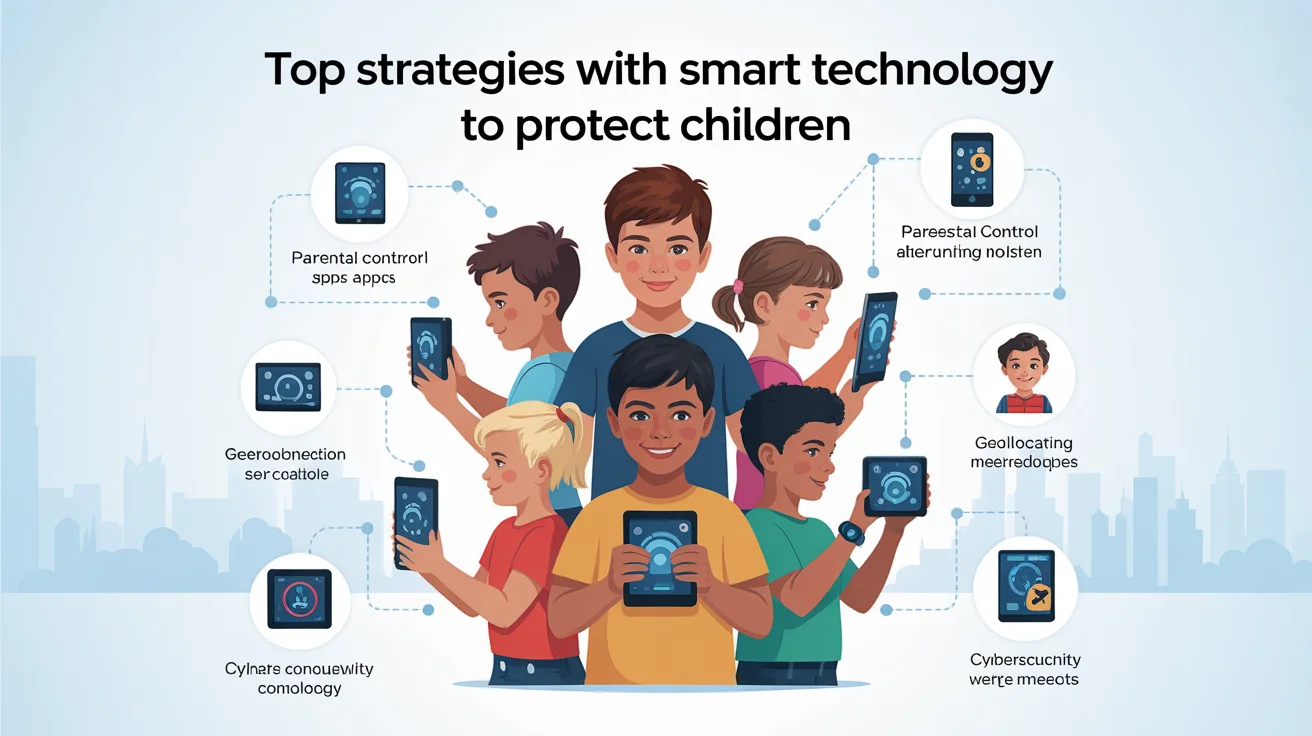Today, children grow up surrounded by screens, smart devices, and the internet. While these tools offer learning and entertainment, they also have safety risks. Parents need powerful yet practical methods to protect their children in this digital age.
This article uses new and unique insights to explore Top Strategies with Smart Technology to Protect Children. These approaches are based on expert recommendations and smart tech innovations, making them ideal for modern parenting.
Every strategy is detailed to improve your understanding, security practices, and digital awareness.
Parental Control Apps: Your First Line of Defence
Parental control apps are essential for managing what children can access online. These tools help filter content, set screen time limits, and monitor digital behaviour. Apps like Qustodio, Net Nanny, and Bark give parents real-time insights into their children’s online activities.
They allow you to block inappropriate websites and track social media conversations. Most importantly, they help build digital discipline without invading privacy. These apps are the foundation of tech-based child safety.
AI-Powered Monitoring: Smarter, Safer Supervision
Artificial Intelligence is now being used in child protection apps and platforms. AI can detect cyberbullying, explicit content, and emotional distress through analysis of chats, emails, and social posts.
These AI systems alert parents without reading every message, offering a smart way to protect privacy and safety together.
AI can also analyze behavioral patterns and detect signs of grooming or dangerous online interactions. This level of smart intervention gives parents peace of mind while allowing children digital freedom within safe boundaries.
Smart Home Devices: Building a Safer Environment
Smart home devices play a major role in keeping children physically safe at home. From baby monitors with motion detection to smart locks and voice assistants, these gadgets give parents better control over their environment.
Benefits of Smart Home Integration
These devices allow parents to monitor entry points, set up motion alerts, and interact with their children remotely. You can lock doors, check room temperatures, and even set routines that reduce screen time or trigger alerts when rules are broken.
Key Advantages:
- Smart cameras with real-time video and audio monitoring
- Child-safe smart assistants (e.g., Amazon Echo Kids)
- Motion sensors and geo-fencing for indoor and outdoor tracking
GPS Trackers and Wearables: Keeping Tabs with Tech
Smart wearables like GPS watches and trackers are powerful tools for outdoor safety. These devices help parents track their child’s real-time location and get instant emergency alerts. They are ideal for school routes, field trips, and everyday outings.
These gadgets can also include features like SOS buttons, call support, and fitness tracking. Some advanced wearables even notify parents if the child strays from safe zones. Wearables make mobility safe without limiting independence.
Safe Browsing and Child-Friendly Search Engines

The internet is full of inappropriate content that children may accidentally access. Safe browsers and kid-friendly search engines significantly reduce this risk. They block explicit sites and offer filtered results that match age-appropriate interests.
Safe search tools like Kiddle, KidRex, and Google SafeSearch offer peace of mind when children use the web. These tools create a secure learning space, promoting digital confidence and reducing fear of exposure.
Smart Scheduling Tools for Digital Balance
Children need a balance between screen time and real-life interaction. Smart scheduling tools allow parents to set digital usage routines across devices. By limiting app usage or internet time, these tools encourage good habits and prevent screen addiction.
Smart schedules control time and promote better sleeping and learning patterns. Parents can use them to set digital curfews or reward healthy digital habits. This makes technology a support system, not a distraction.
School-Tech Collaboration for Better Safety
Schools now use technology to enhance student safety and communication. Parents can connect to digital classroom platforms, live GPS buses, and alert systems. This helps track attendance, homework, and even school emergencies in real-time.
Advantages of School-Tech Systems:
- Real-time school bus GPS tracking
- Digital ID cards with attendance logs
- Emergency SMS or app alerts for safety issues
Cyberbullying Detection and Prevention Tools
Cyberbullying is a major concern today. Many children suffer in silence due to fear or shame. Smart tools now analyze messages, posts, and chat content to detect bullying behaviour. These systems alert parents and sometimes school officials when harmful language or threats appear.
Advanced software can detect changes in tone, repetition of insults, or risky content. This helps parents act early, support their child, and involve educators.
Virtual Assistants for Learning and Safety Guidance
Virtual assistants like Google Assistant and Alexa are more than just smart gadgets. They can be customized to help children learn, answer safe questions, and even control household smart devices securely. It become educational and safety companions with the right filters and parental settings.
They also serve as tools for reminders, learning games, and setting routines like bedtime stories or quiet time. Parents can limit what children can access and monitor interactions via parental dashboards.
Education and Digital Literacy as a Long-Term Strategy
While smart tools are helpful, real safety comes from education. Teaching kids about digital risks, privacy, and responsible usage builds lifelong habits. Combining smart tech with digital literacy ensures children become smart, safe digital citizens.
Digital education includes identifying fake news, avoiding dangerous apps, and understanding online consent. It reduces dependency on tech and increases children’s ability to handle issues independently.
Conclusion:
Using smart technology for child safety is not about surveillance. it’s about empowerment. These tools help you stay connected, informed, and prepared without micromanaging your child’s every move.
Every strategy mentioned here, from wearables to AI, enhances safety while respecting freedom.
The top strategies for using smart technology to protect children include practical tools, educational efforts, and strong parent-child communication.
Use them as part of a bigger parenting approach. The goal is not just to monitor your child but to raise a digitally aware and confident individual.
Frequently Asked Questions:
1. What are top strategies with smart technology to protect children?
Smart cameras, GPS trackers, parental control apps, and smart home devices are common tools for child safety.
2. How does GPS tracking enhance child safety?
It allows parents to monitor their child’s real-time location and get alerts if they leave safe zones.
3. Can smart technology monitor online activities?
Yes, parental control apps can filter content, limit screen time, and track online behaviour.
4. Is smart technology reliable for emergencies?
Many devices have SOS features and instant alerts to notify parents during emergencies.
5. Are these smart safety tools easy to use for parents?
Most smart safety devices have user-friendly apps for quick setup and real-time monitoring.




